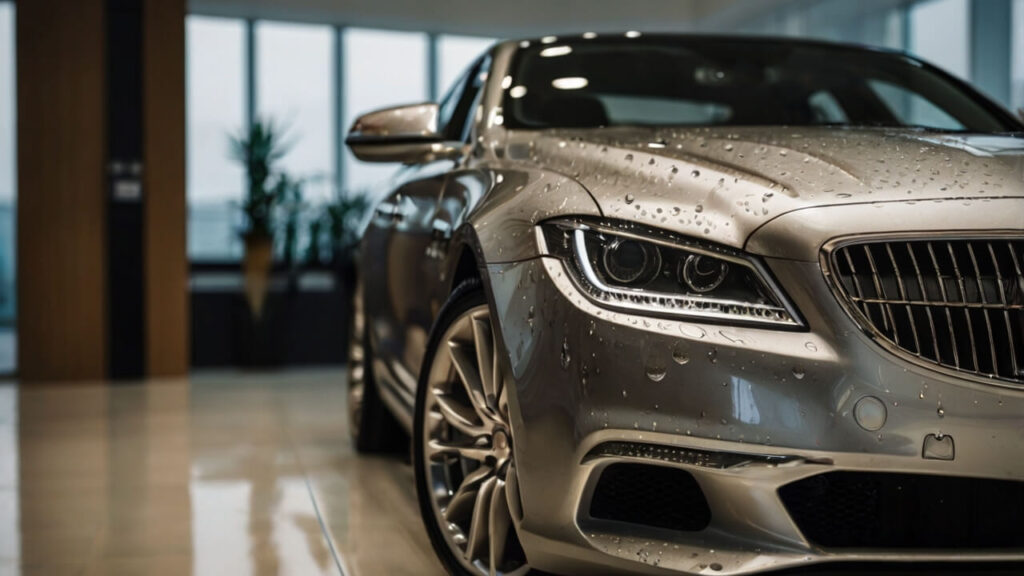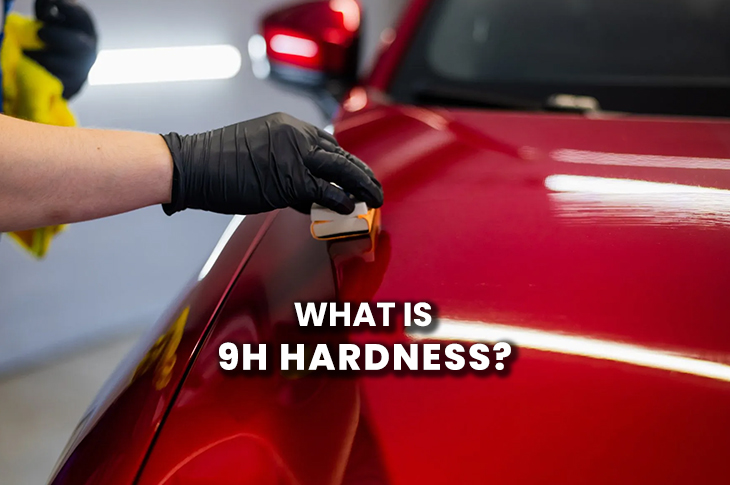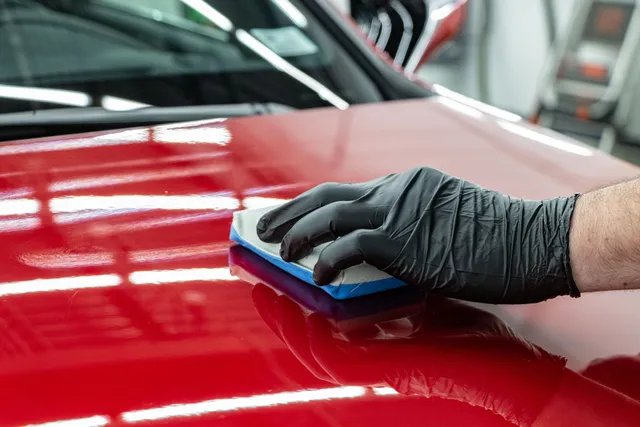
Ceramic coating has quickly become a popular choice among Indian car owners who want to protect their vehicle’s paint and keep it looking brand new. Compared to traditional waxing, this advanced technology offers longer-lasting and more effective protection, making it a favourite for both casual drivers and automobile enthusiasts.
This guide explains what ceramic coating is, how it works, its technical details, application process, and how it compares to other paint protection methods — with a special mention of Feynlab’s innovative solutions.
Ceramic coating is a liquid applied to your car’s paint that acts like a transparent shield. Once applied, it bonds with the paint surface at a molecular level, creating a protective layer that won’t wash off with regular cleaning.
Unlike car wax, which simply sits on top and wears away over time, ceramic coating forms a permanent or semi-permanent bond. This means it can last for months — and in some cases, even years.
Key benefits of this layer include:
The term nano-ceramic refers to the ultra-fine particles in the coating, which can fill microscopic imperfections in the paint for a smoother finish.

One of the most common — and often misunderstood — marketing claims for ceramic coatings is the “9H Hardness” rating. To make an informed decision, it’s important to know exactly what this means… and what it doesn’t.
The “9H” comes from the Pencil Hardness Test (also called the Wolff-Wilborn test). In this test, pencils with different hardness levels — from soft ‘B’ grades to hard ‘H’ grades (up to 9H) — are pushed across the coated surface at a fixed 45° angle with consistent pressure.
If the coating resists scratching from the hardest pencil (9H), it earns a 9H rating. This is a sign of strong surface resistance to minor abrasions.
However, this is not the same as the Mohs Scale of Mineral Hardness used in geology. On the Mohs scale, hardness ranges from 1 (Talc) to 10 (Diamond). Level 9 here means materials like corundum (sapphires, rubies) — far harder than anything a pencil can match.

Another standout feature of ceramic coatings is their hydrophobic property — the ability to repel water. Once the coating cures, the nano-ceramic particles form an extremely smooth surface with very low surface free energy.
This means water finds it hard to spread out or “wet” the surface. Instead, it forms tight, round beads (high contact angle) that easily roll off, especially on sloped or vertical areas of the car.
As these beads roll away, they often carry light dust and dirt with them — a phenomenon known as the self-cleaning effect or easy-cleaning effect.
For Indian driving conditions — whether it’s dusty city streets, muddy monsoon roads, or sudden summer showers — this hydrophobic property helps your car stay cleaner for longer and makes washing it far easier.
The water-repelling nature of ceramic coatings offers several practical advantages, especially for Indian driving and weather conditions:
The main reason ceramic coatings outperform traditional waxes and sealants lies in their chemical bonding to the paint. This bond makes them far more durable, chemically resistant, and long-lasting — qualities that justify the extra cost and more detailed application process compared to temporary, surface-level protectants.
Ceramic coating forms a thin, invisible protective layer over your car’s paint, acting as a sacrificial barrier. This layer takes the hit from contaminants like dust, road grime, bug splatter, bird droppings, and pollution, preventing them from harming the original paint.
Thanks to its hydrophobic properties, water beads up and rolls off the surface, often carrying away light dirt with it. This makes regular cleaning quicker and easier.
What makes ceramic coatings truly durable is their ability to chemically bond with the paint, creating a semi-permanent or even permanent layer that won’t wash away in rain or with routine cleaning.

Applying ceramic coating is a careful, detail-oriented process that demands patience and preparation to get the best results. The typical steps are:
Tip: In India, where dust and humidity levels vary widely, an indoor or covered application area is especially important for a flawless finish.
While DIY kits are available for enthusiasts, a professional application is often the best choice for achieving perfect results — especially for brand-new or premium vehicles.
Feynlab offers both professional-grade installations and DIY-friendly products, making it easy for both casual car owners and detailing experts to get high-quality protection.
Feynlab is recognised globally for pushing the boundaries of ceramic coating technology, offering products known for their advanced formulations, durability, and real-world performance.

Born from innovation, FEYNLAB® was founded by pioneers in ceramic and nano coatings. Today, we’re the 3rd largest global manufacturer of automotive ceramic coatings and the only fully vertically integrated company in the U.S.